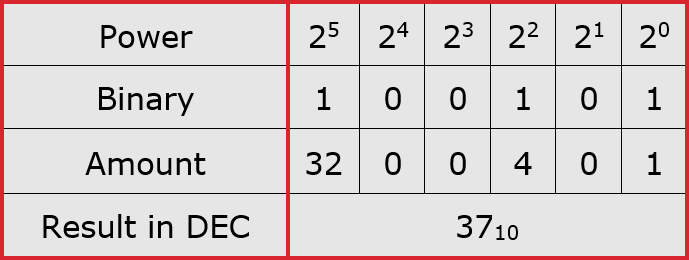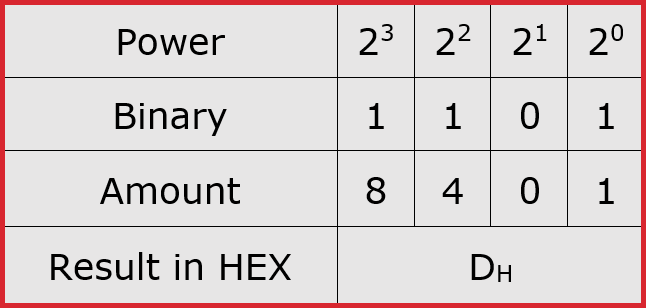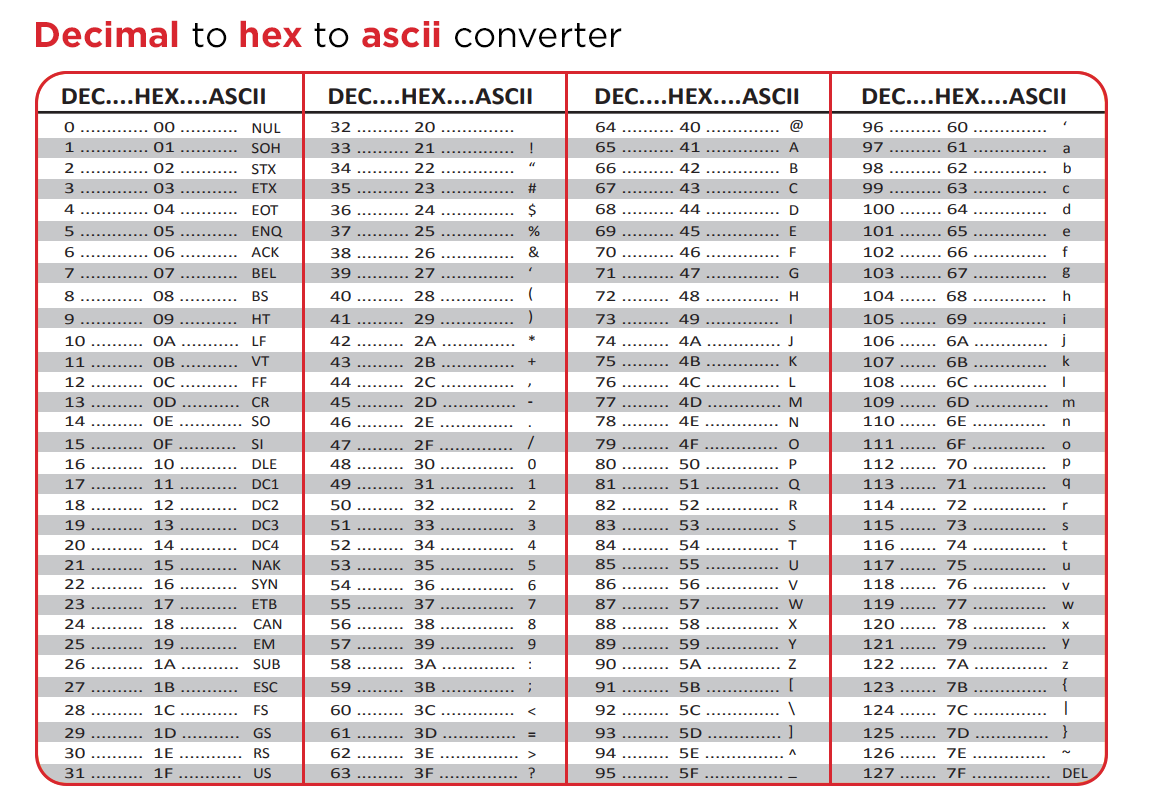Numbering systems, Decimal, Binary, Hexadecimal and ASCII
A numbering system is a systematic way to represent numbers using a particular set of symbols.
Position Notation
All the numbering systems are positional systems. That's, the value of any symbol depends on its position in the number. E.g. the value of 3 in the number 623 is that of three units, whereas its value in decimal 376 is that of three hundred.
Be aware that the powers increase from the right. The power of the rightmost digit is zero power, 100 (ones) of the next digit is on, 101 (tens), and the power of the next digit is 102 (hundreds) and so on. These powers are also called the weight of the digit!
Therefore:
- The rightmost digit is called the LEAST SIGNIFICANT DIGIT/BIT = LSD/LSB
- The leftmost digit is called the MOST SIGNIFICANT DIGIT/BIT = MSD/MSB
Decimal (DEC)
The most commonly known system is the decimal system, based on the number 10, also known as the basis. The basis tells how many different individual symbols are in the system to represent numbers.
In the decimal system these digits are 0, 1, 2, 3, 4, 5, 6, 7, 8, 9.
Binary (BIN)
The binary numbering system is based on the number 2, and it only has two symbols: 0 and 1 (Zero and One)
Either of these symbols can be called a binary digit or bit, as a bit is defined as a fundamental unit of information having just two possible values, either 0 or 1.
An example of how to convert from binary to decimal can be seen below:

Hexadecimal (HEX)
The hexadecimal system has 16 symbols: 0, 1, 2, 3, 4, 5, 6, 7, 8, 9, A, B, C, D, E, F.
Where A is 10, B is 11, C is 12, D is 13, E is 14 and F is 15.
The reason for choosing single letters to represent numbers higher than 9, is to keep individual symbols in single characters; a binary number becomes to interpret when one digit represents more than one bit. in this case a HEX digit represents four bits, see example below:

ASCII
We cannot directly read HEX even though it's much easier than reading binary! But we have been given some tools to help us read these numbering systems, and one of them is called the ASCII table.

In the ASCII table, we can convert HEX into readable commands like if you take 4E 45 45 54 53 in HEX it spells NEETS in ASCII.
Numbering Systems in the AV industry
In the AV business, we are working with different kinds of numbering systems, because the controllers and devices we are trying to control does not understand decimal digits. This is because a chip in any of the devices only understands binary, ON/OFF - 1 and 0's and the decimal numbering systems with its power of 10 does not fit well together with this, but Hexadecimal does since it has the power of 16.

